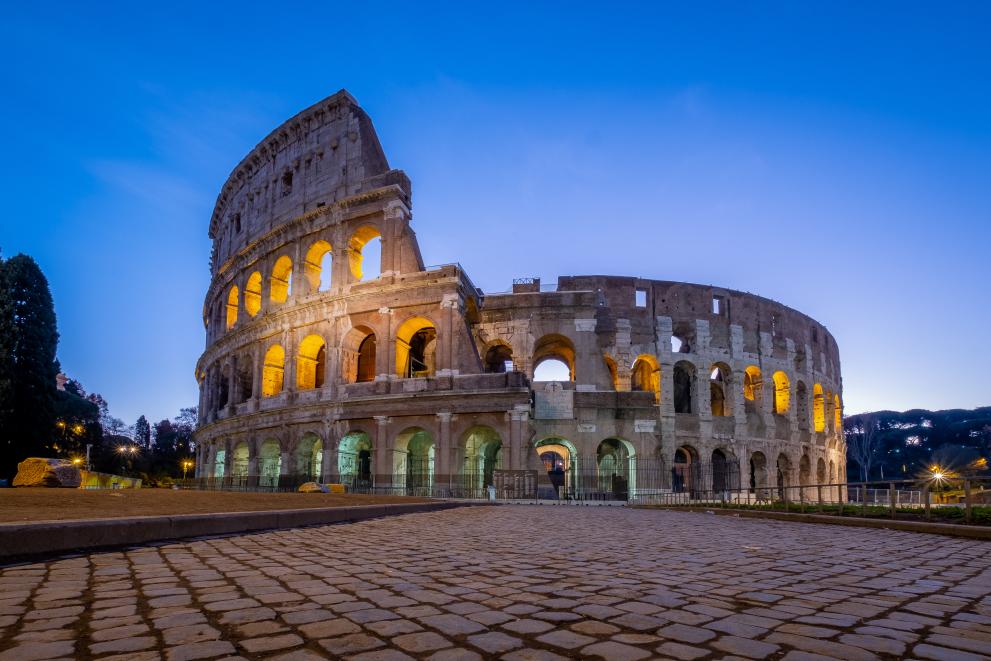
This month Valentina Montalto completes four years at the JRC, although she might have expected to reach the anniversary under slightly different circumstances.
As project leader for the JRC’s Cultural and Creative Cities Monitor, her work is helping Europe’s communities to make the most of their rich cultural diversity.
Since the start of lockdown in Italy, she’s been applying that knowledge to assess what the coronavirus pandemic means for Europe’s cultural sectors and how EU countries are preparing for the impacts.
What work do you do at the JRC and how has this been affected by the coronavirus pandemic?
Under normal circumstances my days tend to be quite varied, depending on the tasks at hand. I’m often doing data analysis, preparing policy briefs for Commissioners and Directors in Brussels, or reading and writing research papers.

My work also usually involves a fair amount of travel. Once or twice a month I will be in cities around Europe to meet local authorities, universities and European institutions and implement the Cultural and Creative Cities Monitor’s dissemination and uptake strategy.
Due to the coronavirus pandemic I have had to put these travel plans on hold.
Despite not being able to travel, the pandemic has not been so disruptive for my work. I’m already used to teleworking now and again, and the time at home has given me the opportunity to reflect and invest time on researching and re-designing future editions of the Monitor, which certainly cannot ignore what is happening right now.
You’re looking at the impact of the outbreak on cultural activities and related professions. What have you been able to find out so far?
Along with tourism, cultural sectors are among the most adversely affected by this pandemic. Artistic and cultural events are being postponed or cancelled all across Europe.
Cultural activities are wide ranging and varied, which makes it difficult to put a precise figure on the number of jobs at stake. Eurostat data suggests it could be around 7.3 million, representing 3.7% of total employment across the EU.
Many of these jobs lack adequate protection. In fact, 32% of cultural sector workers are self-employed.
The European Union is supporting cultural sectors at this time, and is taking a fully flexible approach to the deadlines of funding applications through the Creative Europe programme.
But it primarily falls to individual EU countries to propose economic measures for the most affected sectors, including the cultural ones.
Italy was the first country in Europe to move in this direction: the ‘Cura Italia’ decree introduces several economic measures, including a €130 million fund for the performing arts, film and audiovisual sectors.
Other countries have since also adopted emergency economic measures and some have established specific funds for workers in the cultural sector. France is one example, where €22 million is being allocated to various cultural sub-sectors, including books, music, entertainment and the visual arts.
Other countries have set up general funds that cover workers or sectors whose activities are endangered by confinement measures.
Examples include Belgium (€50 million euro fund), Sweden (€90 million euro focusing on the cultural sectors and sports) and Germany (€ 50 billion for small businesses and freelancers, plus € 10 billion to extend social protection instruments, including subsidies for unemployment, to freelancers including artists, for a period of six months).
We plan to widen the scope of our investigation to include the specific impacts of this pandemic on culture at the city level. Data from the Cultural and Creative Cities Monitor to help us in that task.
What has been the most interesting observation with your research so far?
A crisis like this dampens the cultural vitality that countries and cities have long fought for in the global race to attract inhabitants, talent, visitors, and investment.
There’s no doubt that empty streets, squares and cultural venues damage our economy. But they also create a strong sense of social discomfort.
Art and culture can help to act as a remedy. We’re now finding more and more art exhibitions, music and films on digital platforms, acting as a "social connector" that people can engage with from home.
This goes some way to explaining why countries are adopting specific measures to support the cultural sectors and cultural workers in the most precarious positions right now.
We may also be able to take some positive experiences from this crisis. Future cultural policies can use this move to digital content to shape new and engaging formats, foster strategic relationships between the culture, education and tourism sectors - and reach new audiences and markets.
Related Content
Website: Cultural and Creative Cities Monitor
Article: "Covid-19: expected impacts and policy options to safeguard the creative economy" (in Italian)
Details
- Publication date
- 8 April 2020
